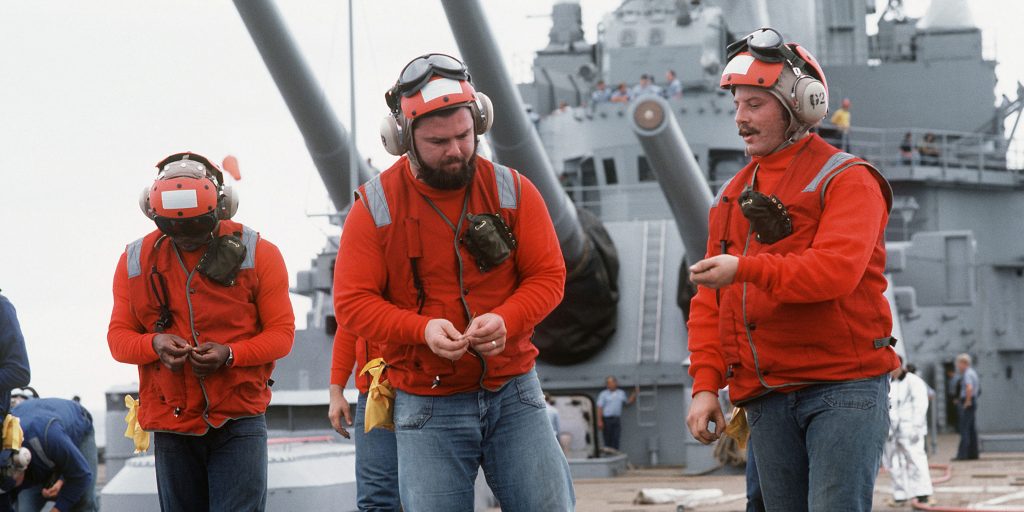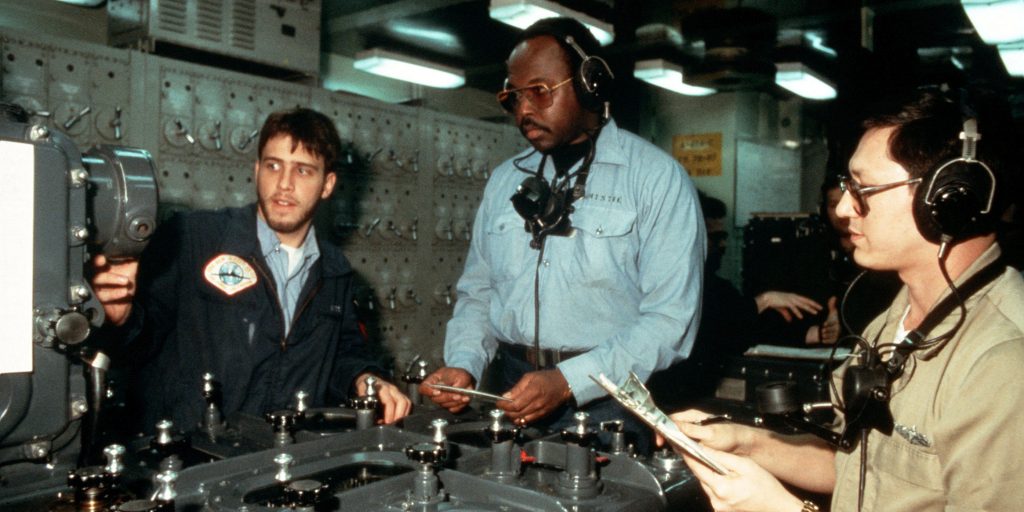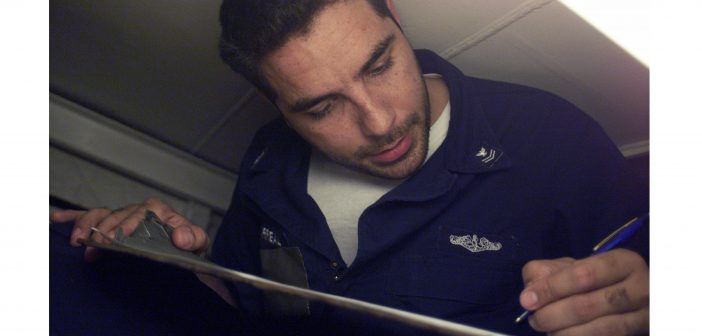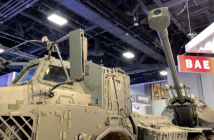Beards are a hot button issue – sailors want them – Navy leadership says they can’t have them.
Now the last bastions of beards in the Navy – “permanent no shave chits” issued for medical reasons, are being be thrown overboard, too.
Instead, the service will expand treatment options for sailors with skin issues caused by shaving.
It’s not that the service hasn’t considered again allowing beards – they have.
The Navy has studied beards many times since 1985, the last time beards were allowed throughout the ranks. Each time, the conclusion is the same — they pose a significant safety hazard in shipboard environments. That’s why facial hair, other than mustaches, will stay banned in the Navy.
“In 2016, the Naval Safety Center conducted a study on face seal guidance and released a report that confirmed that facial hair – beards – are a personnel safety risk where the wear of breathing protection may be required,” said Rear Admiral Jeffrey T. Jablon, who directs the military plans and policy division on the staff of the chief of naval personnel.

A bearded sailor onboard the battleship New Jersey picks up debris, on the ship’s flight deck after the firing of the 16-inch/50-caliber guns aboard the battleship during sea trials in January 1983.
Again last year, the Navy ordered another review of the issue. This time they not only went over the original research, but dug even deeper.
In the end experts came away even more convinced that beards were incompatible with shipboard life, issuing guidance to the fleet in a Nov. 26 message stating that “if a proper seal is not maintained, the result can be serious injury, including death.”
The danger not only applies to those using breathing apparatus for fighting fires. Instead, it also applies to the various types of respirators used to protect sailors working around hazardous materials, including the traditional sailor job of painting.
It’s those concerns that brought the Navy to taking their no-beards stance to another level and rid the service of permanent medical permission to grow beards.
Such permission has long been able to sailors with a chronic skin condition called Pseudofolliculitis Barbae or PFB. It’s a condition officials say effects about 6,000 sailors each year.
In an attempt to level the playing field for all, Jablon said. Instead, the service will up the ante on treating the condition, which happens as a result of shaving.
As the hair grows back tightly curled beard hairs, sharpened by shaving, curve back and re-enter the skin. The end result is inflammation, bumps and infections.
Until now, the primary treatment is to stop shaving for up to 60-days and treat the skin and the facial hair with a special cream that seeks to soften the hairs. These sailors are allowed to grow beards that don’t exceed 1/4th of an inch.
If the initial treatment fails, that’s when some new treatments will kick in instead of simply authorizing sailors a permanent “no shave” authorization — known in the Navy as a “chit.”

Sailors with beards on the cruiser Pensacola during World War II. (Naval Institute)
Instead, the Navy will begin to give laser hair treatments at some Navy medical facilities. Those away from areas the Navy offers this treatment may get permission to see civilian docs with the Navy picking up the tab.
“The goal of our laser treatments are not to make these sailors beardless, they are to enable them to shave comfortably,” said Cmdr. Thomas K. Barlow, a Navy dermatologist.
The treatments don’t kill hair outright, he said, after each treatment, there will be a temporary period of time with no hair growth.:
When hair does start growing again “in about two months,” Barlow said, the hair is usually thinner, softer and less curly, thus less likely to cause the PFB skin condition and telltale bumps and inflammation.
The condition will stay away as long as sailors get periodic treatments
Sailors who refuse to take the treatments could eventually be administratively discharged. But Barlow says sailors shouldn’t fear not being able to grow a beard again when their Navy days are over.
“It might be slightly thinner, but they will resume the ability to grow a beard unless they keep up with the treatments, long term,” he said.
So, Jablons says, the service will stop issuing the permanent no shave authorizations. Those who already have them will have six months to “obtain a medical re-evaluation” and opt into a “new treatment regimen.”
Facial hair has a long tradition navies all around the world. Until the early 1900’s beards were authorized in the U.S. Navy. Even when uniform regulations forbade their growth, skippers could often allow sailors to grow them on long cruises as a way to conserve water. But most would be clean shaven once arriving in port.
In the modern Navy, the Pandora’s Box of beards was first opened in 1970. Most attribute the change in policy to then newly appointed Chief of Naval Operations Adm. Elmo “Bud” Zumwalt, who took over the Navy in July of that year.
Not so, the historical record says. ItZumwalt’s predecessor, Adm. Thomas Moorer who first authorized beards three months before Zumwalt relieved him as CNO on July 1, 1970.
In a “personal letter to all flag officers, unit commanders and commanding officers,” dated March 27, 1970, Moorer cited the plethora of requests he was getting for more lax haircut, sideburn and beard rules “prompted by the current trend of today’s society towards longer hair, longer sideburns and beards.”
Citing recent “explicit guidance” added into the Navy’s Uniform Regulations, Moorer wrote that “beards and mustaches are not prohibited, provided they are short, neatly trimmed and not eccentric.” Apparently there was more concern over sideburns, Moorer addded which he added should go no lower than a sailor’s ear lobe and be “neatly trimmed and straight.”

Seaman Clarence Christie, center, stands watch as a phone talker in the forward secondary battery plot room of the battleship New Jersey with Fire Control Technician 2nd Class Tim Rutt and FTGC Mark Sedeker in the early 1980’s when beards were still authorized. (National Archives)
Hair, he said, must ” appear evenly graduated and not more than three-inches in length.” Then as now, “operational safety” needed to be considered on a case-by-case basis if the beard or mustache interfered with the proper wearing of the OBA — Oxygen Breathing Apparatus — which was the Navy’s firefighting apparatus of the day or aviation oxygen masks for flight crews.
What ensured was months of confusion. There was wide disparity in how individual commanders interpreted the guidance and Zumwalt was tired of hearing it, so he issued his famous Z-Gram message #57 dated Nov. 10, 1970, to try clarify the issue. The message was nicknamed the “Mickey Mouse” or “chicken” message in the fleet. That’s because the one of the message was taken by many as a rebuke of commanders who refused to allow the approved facial hair for no good reason.
“It appears that my predecessor’s guidance in may on the subject of haircuts, beards and sideburns is insufficiently understood,” Zumwalt wrote. “For this reason, I want to restate what I believed to be explicit: in the case of haircuts, sideburns, and contemporary clothing styles, my view is that we must learn to adapt to changing fashions.”
Just two months later, Zumwalt felt more explicit guidance was needed, writing in Z-Gram #70 on Jan. 21, 1971 he wanted to give “further amplification.”
“If a beard or mustache is worn, it shall be well groomed and neatly trimmed in order not to contribute to a ragged appearance,” he wrote. “This policy authorizes and includes full and partial beards, van dykes, and goatees.”
The policy would be short-lived, only 14-years, but popular.
Sailors wanting to grow a beard would submit a “special request chit” up the ranks for approval, usually through their chief to the division officer. Once approved, the growing could start. There were strict written rules on length as the beard couldn’t be more than an inch from the face. But enforcement varied by command.
As always, sailors would find ways around the rules, too. One practice was packing their beards close to their faces while on duty and then fluffing them out while out in town on liberty.
By 1984, then CNO Adm. James Watkins again banned beards, but only for those in “high visibility positions of leadership,” such as command and executive officers and command master chiefs.
And by December, 1984, Watkins brought the beard era to a close.
With an effective date for being clean shaven set for Jan. 1, 1985, New Year’s Eve celebrations around the Navy featured shaving parties around the fleet with many pushing compliance to the very end.
Strangely enough, Watkins would later recount in an early 1990’s interview that it wasn’t Fleet feedback that was the final straw for beards.
“To be honest, my wife was not a fan of beards and especially didn’t like how sailors looked with them in uniform — she just didn’t think it looked military,” he said. “She had a point and I just got tired of hearing about it.”



